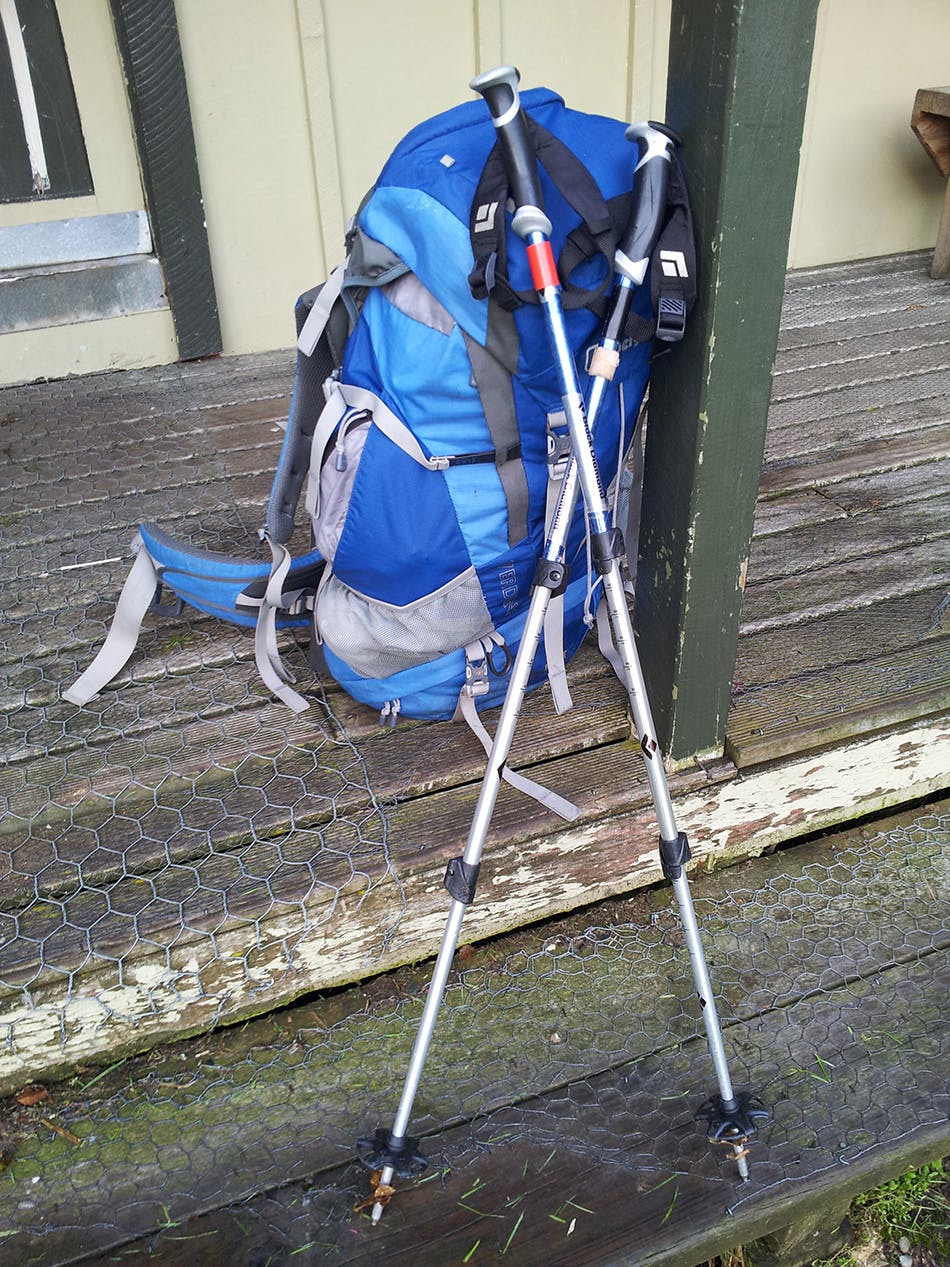Should you buy a pair of walking poles? Hazel Phillips has some thoughts on that
Hi, I’m Hazel and I use walking poles.
I’ve said that confession-style, because it is a confession of sorts. Until very recently, I held great disdain for walking poles and the ‘sort’ of person who used them.
But recently I had a knee issue. It’s a previously reconstructed knee and it had started clicking, cracking and crunching, with a dose of associated pain. I had the opportunity to take a chunk of time off between jobs and go on a tramping bender, and although the knee wasn’t fully co-operating, I wanted to give it a nudge regardless.
I was worried I’d be able to walk into the first hut OK, but then get a sore knee and not be able to walk out again. So I took my trusty ski touring poles, which are adjustable and lightweight, to see if it would help with the load and also as insurance in case I couldn’t walk easily the next day.
As I walked, I got to thinking a lot about walking poles, and as a result I’ve come up with the good, the bad and the ugly.
The good
It’s well established that walking poles help reduce the load on your legs, knees, ankles and feet. A 1981 study showed the use of ‘ski poles’ reduced pressure by around 20 per cent, and other research shows poles reduce the body weight carried by around 5kg per step, increasing to 8kg on an incline. That means tonnes of weight pressure alleviated even for just a short tramp.
I’ve noticed I feel less fatigued and better positioned to tramp steadily for a longer period of time. Poles help give you better balance and stability, particularly when carrying a pack.
On a trip to Gridiron Rock Shelters, I met Dave, a keen tramper from Mapua, who had a similar issue with his knee. We raved for a while about the benefits of poles and I agreed with him when he said: “Poles make the difference between tramping and not tramping”. Hear, hear.
Then I met Jordan, an American Te Araroa tramper carrying a nearly 40kg load including laptop, camera gear, hard drives and solar chargers, who said there was no way he could do it without the poles to help. We don’t all carry 40kg, but it’s the same principle.
Poles are brilliant, I’ve found, when doing solo river or stream crossings. It’s helpful to be able to judge how deep something is before you begin to commit, and it helps you stay balanced as you go through the water, giving you two extra points of contact. Then there’s that moment when you put the poles into a flowing body of water, feel them shake, and think ‘nope, too swift’.
The bad
A walking pole without a rubber cap can damage the track and cause erosion. The more traffic the track gets, the worse the problem. The Tongariro Alpine Crossing is a prime example.
In an article in the March 2011 FMC Bulletin, John Wilton of the DOC Tongariro-Taupo Conservancy wrote that 20 per cent of walkers use poles on the TAC. Nearly all have a sharp metal tip, while only two per cent have a protective rubber cap. Unprotected tips cause much greater damage to the track surface than that caused by normal footfall.
A pole without a tip puts 3000kPa of pressure on the track with each contact, but a cap reduces this to just 70kPa of pressure. DOC reckons 20,000 poles are used on the TAC each year, so with one pole contact per metre over 20km of track, that’s more than 400 million holes each year.
‘On softer sides of the track, poles can begin to erode soils at an alarming rate,’ Wilton wrote.
While poles help stabilise you, I think they can also lull you into laziness. Your body is no longer striving to use all its tiny stabilising muscles, so you’re not building up the strength you really need.
They can also get in the way when you need to scramble up and down things. I’ve devised methods to temporarily deal with the poles on a short scrambling section, but for anything extended, you end up switching the poles from your hands to the pack, and back again.
The ugly
I’ve been poked with more walking poles than I care to recall, and this always gives me tramping rage. For a while I made a rule that nobody who came on my trips was allowed to bring a walking pole. I was mostly kidding, of course, but I don’t recall anyone disobeying the law.
Many people who use poles forget that others around them need to be safe from the tips and take to swinging them around behind them at just the right height to poke your eyes out.
Finally, there’s always that one friend who makes fun of you for using walking poles. One friend enquired on Facebook after seeing a photo of my poles, ‘Are those your Nana Poles, Phillips?’








